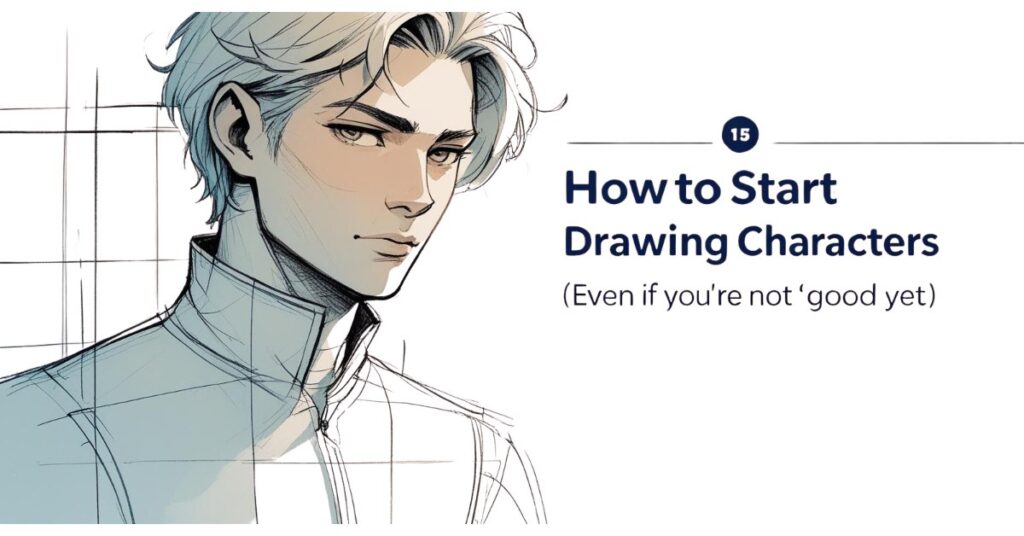If you’ve ever looked at your sketchbook and thought, “I’m just not good at drawing,” you’re not alone.
But here’s the truth: character design isn’t about being perfect. It’s about bringing personality to life—one line, one shape, one idea at a time.
You don’t need to be a master artist to start. You just need to begin. This post is for anyone who feels unsure, stuck, or intimidated by the idea of drawing characters. Let’s make it simple. Let’s make it fun.

Step 1: Start with Shapes, Not Details
Forget eyes, noses, or fancy outfits. Begin with shapes.
- Circles for soft, friendly characters
- Squares for strong, solid ones
- Triangles for energetic or sneaky types
Sketch a bunch of shapes and turn them into bodies. Don’t worry if it looks silly—that’s part of the magic.
Step 2: Give Your Character a Mood
Before drawing the face or clothes, ask yourself:
How is this character feeling?
- Are they tired? Proud? Nervous?
- How would they stand or slump?
- What would their pose say about them?
Draw stick figures that show emotion through pose. It’s a great way to train your eye without needing to draw full details yet.
Step 3: Keep It Sketchy (On Purpose)
Don’t try to make it clean or finished. Loose sketching helps you:
- Experiment quickly
- Explore different ideas
- Build confidence without pressure
Think of it like dancing with your pencil—just move and see what happens.

Step 4: Use Reference, Not Tracing
Pull up a photo, a cartoon frame, or a movie still. Try to recreate the pose or energy using your own character idea.
You’re not copying—you’re studying. You’re learning how bodies move, how expressions form, and how shape can tell a story.
Step 5: Give Yourself Permission to Be Bad
The first 100 drawings might be weird. That’s how it works.
But guess what? Every “bad” sketch brings you closer to something good. Character design is a skill, not a talent.
So start drawing. Start rough. Start awkward. That’s where all great characters begin.
Final Thought: Your Characters Are Waiting
You don’t need to be “good” to start—you just need to start.
Sketch messy. Think in shapes. Focus on emotion and storytelling. Your drawing skills will catch up the more you explore.
The sooner you begin, the sooner your characters come to life.


























